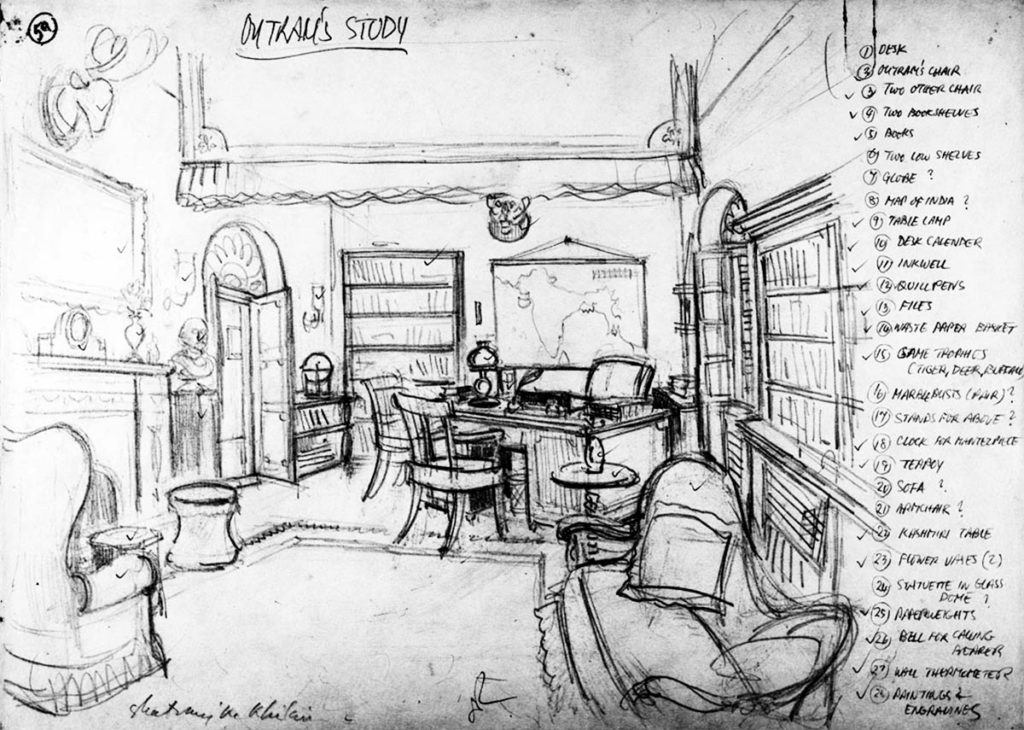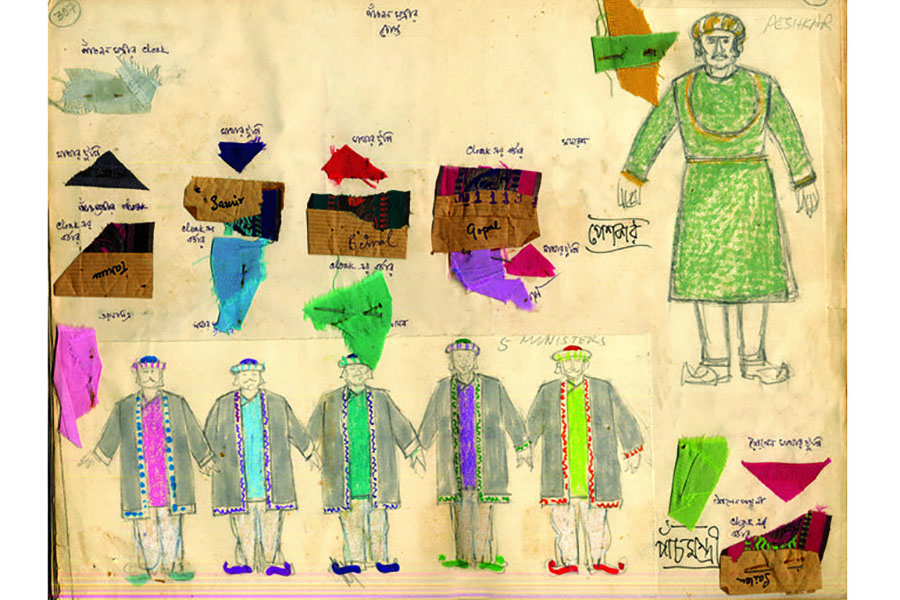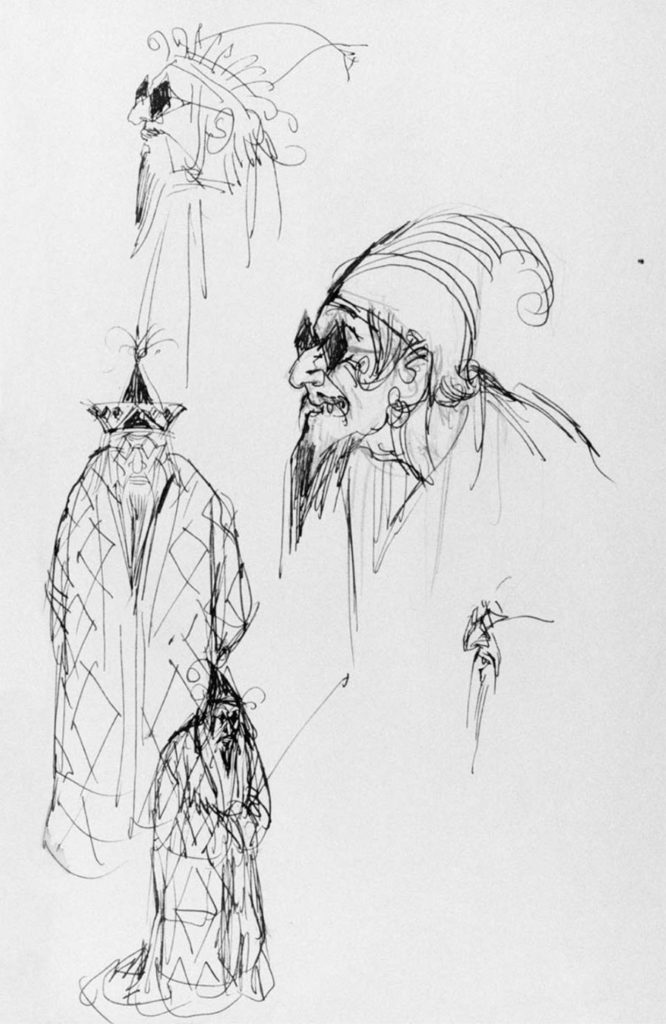Design and Art Direction

tRay usually shot the outdoor scenes on locations and preferred studio for indoor shoots. Sets for this were designed to match the locations with no hint of studio quality or artificiality. His team worked with limited resources but with great technical resourcefulness.
“Simulated natural settings are obsolete now, and exteriors are shot on real locations. If one shoots interiors in actual settings, one achieves the quality of verisimilitude. But there are limiting factors such as poor sound recording (involving the always unsatisfactory business of dubbing), restricted camera movement, interference from onlookers, etc. By and large, I prefer to shoot interiors in the studio where with a gifted collaboration of my designer and my cameraman I can almost always achieve what I want”, he wrote in 1966.
“To the extent that a director knows what he wants, he can impose his ideas on the designer. The designer is independent only up to the point the director allows him”, he said. Ray worked with Bansi Chandragupta, his art director, for about fifteen years. This relationship lasted until the designer’s death in 1981. After designing sets for 19 of Ray’s films, Bansi Chandragupta moved to Bombay in early seventies. He returned again to work on Shantranj Ke Khilari (The Chess Players, 1977).
Ray believed that a film set was built for the camera and for the camera-angles only. Anything that was not effective through the camera was a waste of good money and effort, however pleasing it might look to the naked eye.


